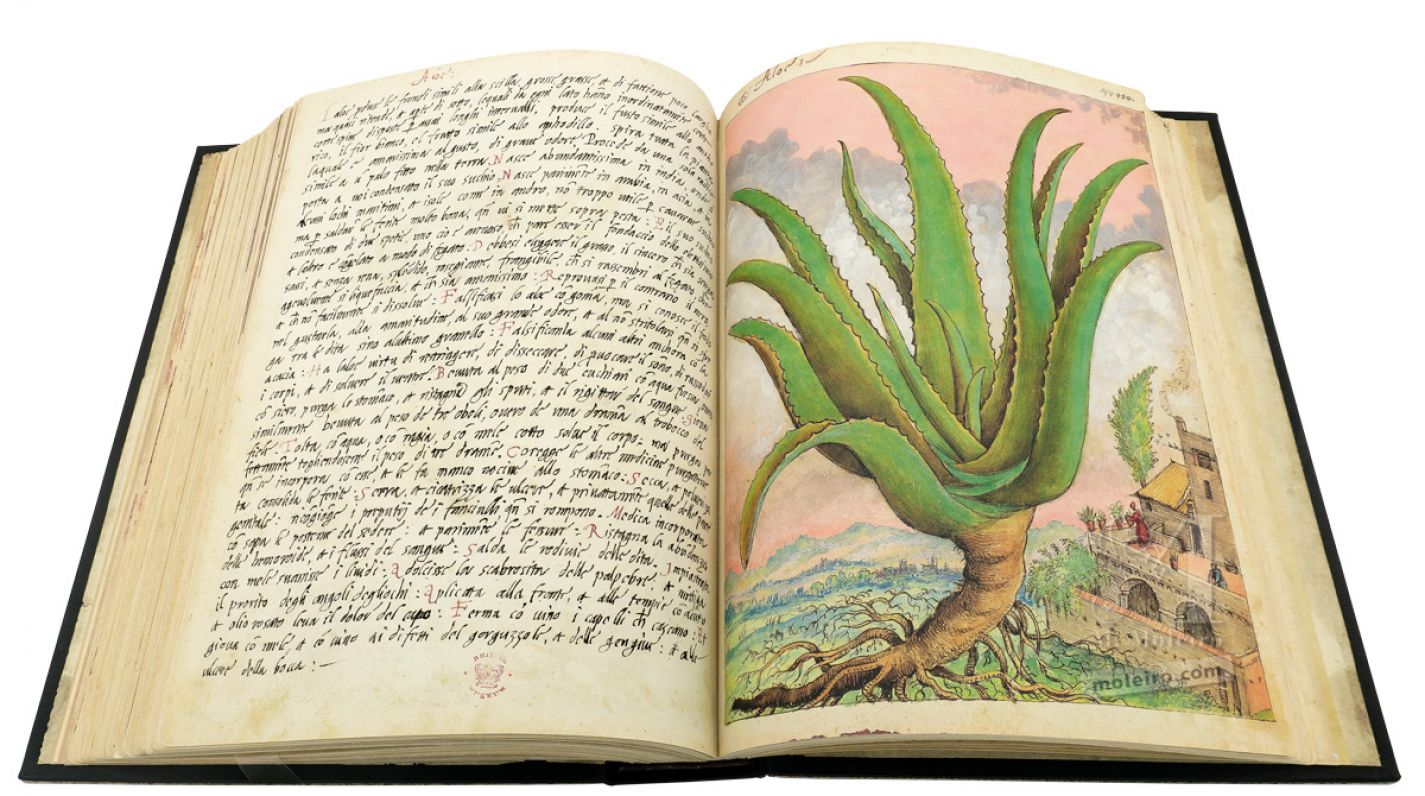"Aloe has a leaf almost like squill, thick and fat. They are like this: not very broad, almost round and open in the lower part, with short irregular prickles well spaced out along each side. The stem, similar to a lily, bears a white flower and a fruit like that of the asphodel. The whole plant, which is very bitter to the taste, emits an unpleasant smell and grows from a single root, like a stake hammered into the ground. It grows most abundantly in India, from where its condensed juice is brought to us. It also grows in Arabia, in Asia, and in several maritime areas and islands, as in Andros. The type from these places is not so good for extracting the juice but is very good for healing wounds if chopped and put on them. There are two kinds of condensed extract: one sandy, which seems to be the residue of the more valuable one, and the other gelatinous, like liver. Much preferred is this thick, pure one, without stones or sand, shiny, reddish, frangible, like liver, which liquifies easily and is very bitter. On the other hand the black type, which does not break up easily, is judged to be of poor quality. When the aloe is adulterated with gum, the deceit is obvious from its bitter taste, its strong smell, and the fact that it does not fall into pieces easily, down to the last crumb, when rubbed between the fingers. There are also those who adulterate it with acacia. Aloe has astringent and drying properties, induces sleep, tones the body, and has a laxative effect. Two spoonfuls drunk with fresh water, or with whey, purges the stomach, and stops the spitting of catarrh and blood; three obols, or one dram, are good for excess of bile. Taken with water or spirit or cooked honey, it stimulates the bowel; but three drams of it taken alone will purge perfectly. When it is combined with other purgative medicines, it corrects them and makes them less harmful to the stomach. Dried and reduced to a powder, it draws wounds together, closes and heals ulcers, in particular those in the genital area, and rejoins the torn foreskins of infant boys. Incorporated with sapa, it is good for both anal abscesses and sores, prevents the growth of haemorrhoids and stops bleeding. It heals whitlows on the fingers. Applied as a poultice with honey, it fades bruises, smoothes rough swellings of the eyelids and relieves itching at the corners of the eyes. Applied to the forehead and temples with vinegar and rose oil, it drives away headaches. Mixed with wine it stops hair from falling out and together with honey and wine is good for painful throats and gums and sores in the mouth." (f. 143v)
A species native to northeastern Africa and Arabia cultivated since ancient times in the Mediterranean region where it spread into the wild. The very bitter, sticky, dark juice extracted from its leaves is an effective purgative. The white pulp of the leaves is a nutraceutical added to food which is good for the liver, stimulates bile secretion and the appetite and is an aid for the digestion. Applied externally it is excellent for healing wounds and burns. It is also used in cosmetics to moisturise and care for the skin. A cure-all since ancient times, as mentioned earlier, and now in vogue.
Ramón Morales Valverde
Real Jardín Botánico de Madrid
(Extract from the commentary volume of Mattioli's Dioscorides illustrated by Cibo)
